Themed collection 2020 Frontier and Perspective articles

Highlights of the development and application of luminescent lanthanide based coordination polymers, MOFs and functional nanomaterials
This perspective provides a selected overview of some of the recent developments in the area of Ln CP/MOF based nanomaterials for sensing, optical materials and bio-medicine research.
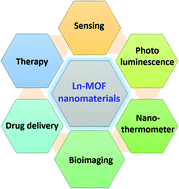
Dalton Trans., 2021,50, 770-784
https://doi.org/10.1039/D0DT03684F
C-Term magnetic circular dichroism (MCD) spectroscopy in paramagnetic transition metal and f-element organometallic chemistry
This perspective provides an introduction to magnetic circular dichroism (MCD) spectroscopy and its efficacy in elucidating both fundamental electronic structure and in situ reaction speciation in d- and f-block organometallics.
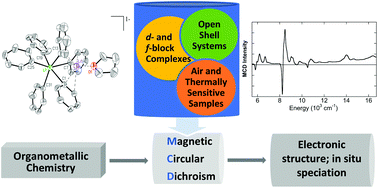
Dalton Trans., 2021,50, 416-428
https://doi.org/10.1039/D0DT03730C
Coumarin functionalized molecular scaffolds for the effectual detection of hazardous fluoride and cyanide
In pursuit of detecting hazardous Fluoride and Cyanide, coumarin-functionalized supramolecular chemosensors are found to be highly proficient owing to their various applications in biological systems and advanced material fields.
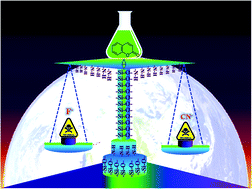
Dalton Trans., 2021,50, 429-451
https://doi.org/10.1039/D0DT03451G
Recent progress and perspectives on the structural design on metal–organic zeolite (MOZ) frameworks
Metal–organic zeolites (MOZs) as typical solid porous materials inherit structural advantages of inorganic zeolites and have been applied in many areas. Herein, we outline recent progress and perspectives of their synthesis and functionalization.

Dalton Trans., 2021,50, 15-28
https://doi.org/10.1039/D0DT03524F
The usefulness of energy decomposition schemes to rationalize host–guest interactions
The findings reported here reveal the robustness and practical application of EDA-NOCV in rationalizing molecular recognition situations in host–guest systems.
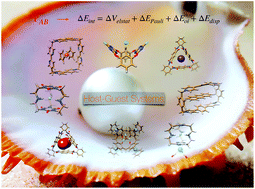
Dalton Trans., 2020,49, 17457-17471
https://doi.org/10.1039/D0DT03518A
Carbonyl group and carbon dioxide activation by rare-earth-metal complexes
Not just hilariously effective baits! Rare-earth-metal compounds selectively react with aldehydes, ketones and carbon dioxide to generate isolable compounds as crucial intermediates in organic synthesis and homogenous catalysis.
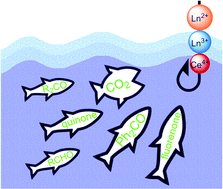
Dalton Trans., 2020,49, 17472-17493
https://doi.org/10.1039/D0DT03578E
Zinc(II) and copper(II) complexes as tools to monitor/inhibit protein phosphorylation events
A perspective on the advance of copper(II) and zinc(II) complexes of varied ligand architectures as binders of phosphorylated peptides/proteins and as sensors of phosphorylation reactions is presented.
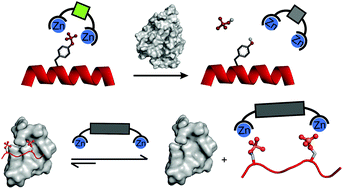
Dalton Trans., 2020,49, 17076-17092
https://doi.org/10.1039/D0DT03503C
Pore engineering of metal–organic frameworks for ethylene purification
Representative progress on metal–organic frameworks for ethylene purification is reviewed based on four categories of adsorption mechanisms dominated by pore engineering strategies.
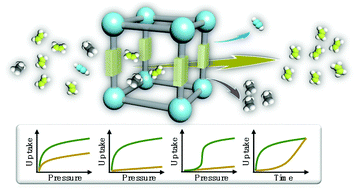
Dalton Trans., 2020,49, 17093-17105
https://doi.org/10.1039/D0DT03279D
Transition metal chemistry of heavier group 14 congener triple-bonded complexes: syntheses and reactivity
The intriguing class of metal–ylidyne M![[triple bond, length as m-dash]](https://www.rsc.org/images/entities/char_e002.gif) E (E = Si–Pb) complexes has received widespread interest in recent years due to their exceptional structure and reactivity features. In this report we summarize the recent developments and their reactivity studies.
E (E = Si–Pb) complexes has received widespread interest in recent years due to their exceptional structure and reactivity features. In this report we summarize the recent developments and their reactivity studies.
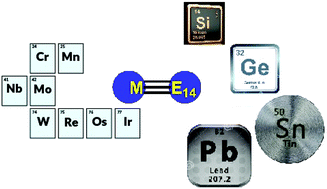
Dalton Trans., 2020,49, 17055-17075
https://doi.org/10.1039/D0DT03378B
Solid state mononuclear divalent nickel spin crossover complexes
As a unique 3d8 spin crossover phenomenon, diverse electron configurations provide more options and strategies for selection.
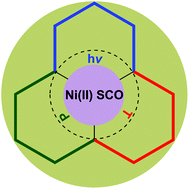
Dalton Trans., 2020,49, 17106-17114
https://doi.org/10.1039/D0DT03421E
The chemistry of Ce-based metal–organic frameworks
The position of cerium in the periodic table explains its unique properties, which are also reflected in the chemistry and features of MOFs. Thus Ce(III)- and Ce(IV)-MOFs exhibit similarities of lanthanide and Zr/Hf-MOFs, respectively.
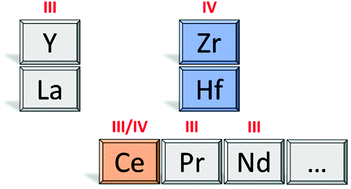
Dalton Trans., 2020,49, 16551-16586
https://doi.org/10.1039/D0DT02813D
Salen-type aluminum and zinc complexes as two-faced Janus compounds: contribution to molecular sensing and polymerization catalysis
The aim of the present review is to highlight the most recent achievements in different fields of application of salen-based zinc and aluminum complexes.
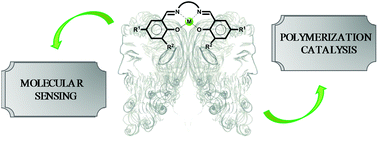
Dalton Trans., 2020,49, 16533-16550
https://doi.org/10.1039/D0DT02639E
Evaluating aqueous flow battery electrolytes: a coordinated approach
Here, we outline some basic pitfalls in the electrochemical investigation of aqueous metal complexes, advocate for the use of bulk electrolysis in redox flow cells for electrolyte analysis, and demonstrate methods of operation and performance of a lab scale redox flow battery.
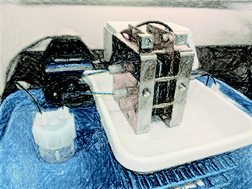
Dalton Trans., 2020,49, 16047-16053
https://doi.org/10.1039/D0DT02462G
In need of a second-hand? The second coordination sphere of ruthenium complexes enables water oxidation with improved catalytic activity
A ligand dangling arm, acting as an intramolecular proton acceptor, drastically increasing the catalytic activity of Ru-complexes for water oxidation.
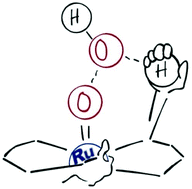
Dalton Trans., 2020,49, 16034-16046
https://doi.org/10.1039/D0DT02958K
What is holding back the development of antiviral metallodrugs? A literature overview and implications for SARS-CoV-2 therapeutics and future viral outbreaks
Despite a significative classical literature, metallodrugs have struggled to reach clinical practice. In light of the COVID-19 outbreak, this review aims at further encouraging and promoting the development of metallodrugs as viable antiviral agents.
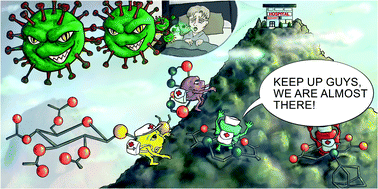
Dalton Trans., 2020,49, 16004-16033
https://doi.org/10.1039/D0DT02478C
A bioinorganic chemistry perspective on the roles of metals as drugs and targets against Mycobacterium tuberculosis – a journey of opportunities
Bioinorganic approaches in developing metallodrugs for tuberculosis are discussed, along with our understanding of key metalloproteins with drug target opportunities.
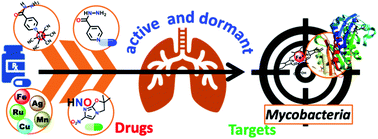
Dalton Trans., 2020,49, 15988-16003
https://doi.org/10.1039/D0DT01365J
The chemical and physical properties of tetravalent lanthanides: Pr, Nd, Tb, and Dy
The thermochemistry, descriptive chemistry, spectroscopy, and physical properties of the tetravalent lanthanides (Pr, Nd, Tb and Dy) in extended phases, gas phase, solution, and as isolable molecular complexes are presented.

Dalton Trans., 2020,49, 15945-15987
https://doi.org/10.1039/D0DT01400A
Acceptorless dehydrogenative coupling with Ru-based catalysts for the synthesis of N-heteroaromatic compounds
A summary of recently developed ruthenium catalysts for the synthesis of N-heteroaromatic compounds via acceptorless dehydrogenative coupling (ADC) and the related auto-transfer-hydrogenative (ATH) reaction.
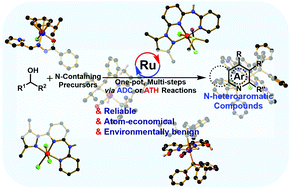
Dalton Trans., 2020,49, 15527-15547
https://doi.org/10.1039/D0DT03282D
Optimizing supramolecular interactions in metal–organic frameworks for C2 separation
C2 separation is of great importance in the petrochemical industry. This perspective presents current status and future challenges in the design of MOF materials for C2 separation.
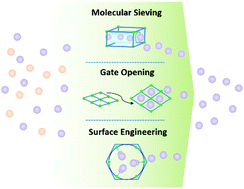
Dalton Trans., 2020,49, 15548-15559
https://doi.org/10.1039/D0DT03013A
The synthesis and versatile reducing power of low-valent uranium complexes
This synthesis and diverse reactivity of uranium(III) and uranium(II) complexes is discussed.

Dalton Trans., 2020,49, 15124-15138
https://doi.org/10.1039/D0DT03151H
Metal organic framework top-down and bottom-up patterning techniques
This perspective comprehensively summarizes the recent state of the art in the use of top-down and bottom-up methodologies to create metal organic framework (MOF) structures with a defined pattern at the nano- and micro-scale.
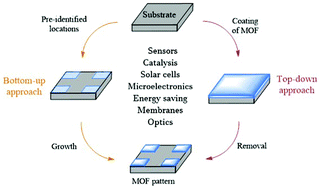
Dalton Trans., 2020,49, 15139-15148
https://doi.org/10.1039/D0DT02207A
Architectural and catalytic aspects of designer materials built using metalloligands of pyridine-2,6-dicarboxamide based ligands
This perspective presents the design, structural and catalytic aspects of discrete complexes as well as multi-dimensional coordination polymers constructed using assorted metalloligands offering various appended functional groups.
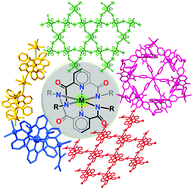
Dalton Trans., 2020,49, 14731-14748
https://doi.org/10.1039/D0DT03058A
Metal–organic frameworks as acid- and/or base-functionalized catalysts for tandem reactions
In this article, we have reviewed the development of MOFs anchored with acidic and/or basic sites as heterogeneous catalysts for tandem/cascade (domino) reactions over the past five years.
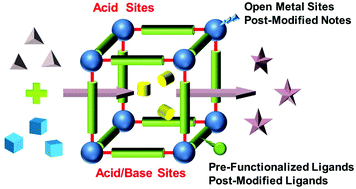
Dalton Trans., 2020,49, 14723-14730
https://doi.org/10.1039/D0DT03025B
Direct C–H bond halogenation and pseudohalogenation of hydrocarbons mediated by high-valent 3d metal-oxo species
This perspective delineates the utility of the high valent 3d-transition metal oxo complexes or species in catalyzing direct C–H halogenation and pseudohalogenation reactions.
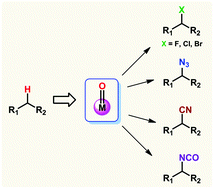
Dalton Trans., 2020,49, 14344-14360
https://doi.org/10.1039/D0DT02533J
Recent advances in metal–organic frameworks for pesticide detection and adsorption
This article highlights the advancement of MOFs in sensing and adsorbing pesticides and progress in the possible mechanism of sensing.
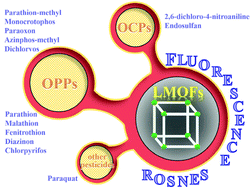
Dalton Trans., 2020,49, 14361-14372
https://doi.org/10.1039/D0DT02623A
Polyoxometalate-based complexes as ligands for the study of actinide chemistry
Complexation of actinide cations by polyoxometalates results in assemblies with exciting electronic properties and highly attractive potential as models for hetereogeneous systems based on actinides supported by metal oxide surfaces.
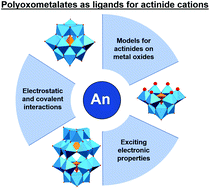
Dalton Trans., 2020,49, 13917-13927
https://doi.org/10.1039/D0DT02755C
Structural elucidation of microcrystalline MOFs from powder X-ray diffraction
Ab initio powder XRD structure solution and MOFs.
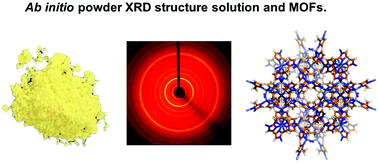
Dalton Trans., 2020,49, 13897-13916
https://doi.org/10.1039/D0DT02802A
The role of photoinduced charge transfer for photocatalysis, photoelectrocatalysis and luminescence sensing in metal–organic frameworks
Understanding PCT taking place within MOFs is crucial for designing porous photo/electrocatalysts and luminescent sensors. Unique features of PCT in MOFs and recent progress along with state-of-the-art characterization methods are discussed in the context of its applications.

Dalton Trans., 2020,49, 12892-12917
https://doi.org/10.1039/D0DT02143A
Organochalcogen ligands in catalysis of oxidation of alcohols and transfer hydrogenation
The perspective covers S, Se or Te-ligated metal complexes and their catalytic applications in oxidation of alcohols and transfer hydrogenation.

Dalton Trans., 2020,49, 12503-12529
https://doi.org/10.1039/D0DT01201G
Recent advances in metal–organic frameworks for electrocatalytic hydrogen evolution and overall water splitting reactions
The best representatives of pristine MOFs are not only inferior to catalysts derived from MOFs, but also superior in some cases.
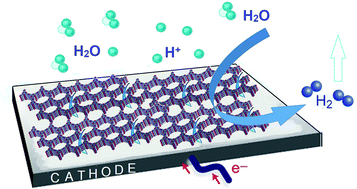
Dalton Trans., 2020,49, 12483-12502
https://doi.org/10.1039/D0DT01741H
Triphosphenium salts: air-stable precursors for phosphorus(I) chemistry
This Perspective summarizes the use of air- and moisture-stable triphosphenium salts of [dppeP]+ as sources of P+ ions to generate low-coordinate P-containing species. The electronic structure and subsequent reactivity of these species is emphasized.
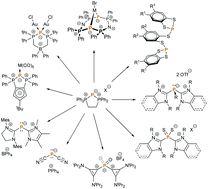
Dalton Trans., 2020,49, 12115-12127
https://doi.org/10.1039/D0DT02219E
Recent highlights and future prospects on mixed-metal MOFs as emerging supercapacitor candidates
Mixed-metallic metal–organic frameworks (M-MOFs) are prepared through one-pot-synthesis or post-synthetic modification approaches and can be easily transformed into various composites/derivatives which offer promising supercapacitor properties.
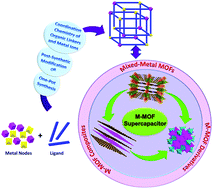
Dalton Trans., 2020,49, 11792-11818
https://doi.org/10.1039/D0DT01676D
Recent advances in iron-complexes as drug candidates for cancer therapy: reactivity, mechanism of action and metabolites
In this perspective, we discuss iron-complexes as drug candidates, and emphasize breakthroughs in the comprehension of their structure–activity relationship, metabolization pathways, sub-cellular localization and influence on iron homeostasis.
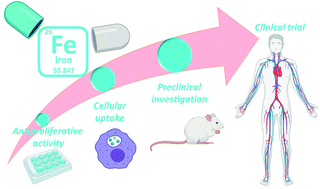
Dalton Trans., 2020,49, 11451-11466
https://doi.org/10.1039/D0DT02135K
Cobalt-based heterogeneous catalysts in an electrolyzer system for sustainable energy storage
Nowadays, the production of hydrogen and oxygen focuses on renewable energy techniques and sustainable energy storage.
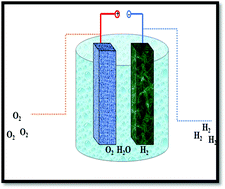
Dalton Trans., 2020,49, 11430-11450
https://doi.org/10.1039/D0DT01469A
Recent advances in MOF-based nanoplatforms generating reactive species for chemodynamic therapy
This review focuses on summarizing the use of MOFs in CDT and their synergetic therapeutics as well as the challenges, obstacles, and development.

Dalton Trans., 2020,49, 11045-11058
https://doi.org/10.1039/D0DT01882A
Induction, control, and rationalization of supramolecular chirogenesis using metalloporphyrin tweezers: a structure-function correlation
A brief account of our systematic investigation for understanding the underpinning mechanism of chirality induction and control at the molecular level over the last few years is presented in this Perspective article.
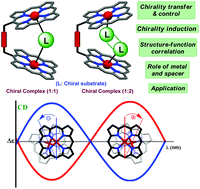
Dalton Trans., 2020,49, 10679-10700
https://doi.org/10.1039/D0DT01874K
A practical guide to calculate the isosteric heat/enthalpy of adsorption via adsorption isotherms in metal–organic frameworks, MOFs
This Perspective presents the procedure of the common Freundlich–Langmuir fit/Clausius–Clapeyron approach and the virial fit of adsorption isotherms with usable Excel sheets and Origin files for the subsequent derivation of ΔHads.
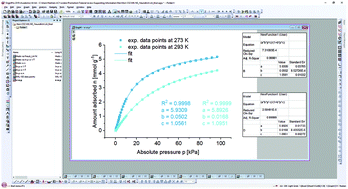
Dalton Trans., 2020,49, 10295-10307
https://doi.org/10.1039/D0DT01784A
Spin dynamics in single-molecule magnets and molecular qubits
This review focus on spin dynamics that controls decoherence times in molecular qubits and magnetic anisotropy in single-molecule magnets.
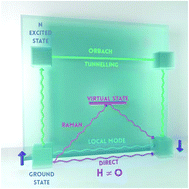
Dalton Trans., 2020,49, 9916-9928
https://doi.org/10.1039/D0DT01414A
Dipicolinamide and isophthalamide based fluorescent chemosensors: recognition and detection of assorted analytes
This perspective presents fluorescent chemosensors based on dipicolinamide and isophthalamide groups that participate in the molecular recognition, sensing and detection of assorted analytes either via a “turn-on” or “turn-off” mechanism.
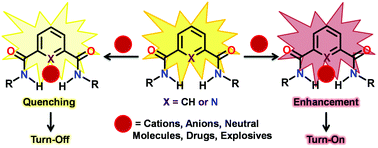
Dalton Trans., 2020,49, 9544-9555
https://doi.org/10.1039/D0DT01508C
Microenvironment-sensitive iridium(III) complexes for disease theranostics
The progress in developing iridium-based probes responding to microenvironmental parameters, which play pivotal roles in the diagnosis and treatment of diseases, is reported.
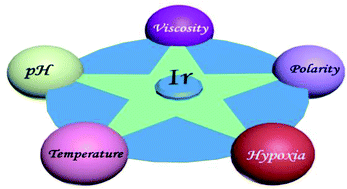
Dalton Trans., 2020,49, 9182-9190
https://doi.org/10.1039/D0DT01444C
Internally functionalized multifaceted organochalcogen compounds
Internally functionalized multifaceted organochalcogen compounds have been designed and their ligand chemistry has been developed. The palladium complexes show remarkable homogeneous catalytic activity.
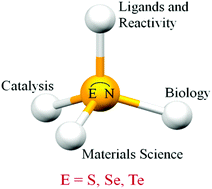
Dalton Trans., 2020,49, 8817-8835
https://doi.org/10.1039/D0DT01160F
Rhenium in the core of porphyrin and rhenium bound to the periphery of porphyrin: synthesis and applications
An overview of most of the well known rhenium porphyrins is presented reviewing their synthesis, coordination chemistry, and applications. The chemistry of some recently known porphyrin-Re conjugates is also discussed.
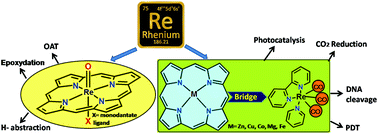
Dalton Trans., 2020,49, 8419-8432
https://doi.org/10.1039/D0DT00813C
Solution XANES and EXAFS analysis of active species of titanium, vanadium complex catalysts in ethylene polymerisation/dimerisation and syndiospecific styrene polymerisation
Mechanistic studies through the solution XANES and EXAFS analysis for V and Ti complex catalysed ethylene polymerisation/dimerization, and syndiospecific styrene polymerisation, including interpretation of the XANES spectra, have been introduced.
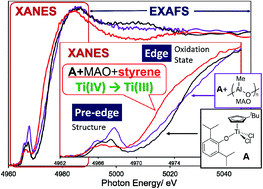
Dalton Trans., 2020,49, 8008-8028
https://doi.org/10.1039/D0DT01139H
Coordination polymers for n-type thermoelectric applications
Coordination polymers (CPs) are potential thermoelectric (TE) materials to replace the sometimes costly, brittle and toxic heavy metal inorganic TEs for near-ambient-temperature applications.

Dalton Trans., 2020,49, 7644-7657
https://doi.org/10.1039/D0DT00872A
A review: recent advances in preparations and applications of heteroatom-doped carbon quantum dots
Heteroatom-doped CQDs have been considered as one of the most effective strategies for improving quantum yield and inherent properties by adding more coordination sites and introducing additional defects.
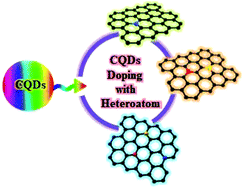
Dalton Trans., 2020,49, 6915-6938
https://doi.org/10.1039/D0DT01004A
Neutral binary chalcogen–nitrogen and ternary S,N,P molecules: new structures, bonding insights and potential applications
This perspective evaluates the results of recent investigations of binary chalcogen–nitrogen molecules, especially nitrogen-rich systems, with a focus of new structures, bonding insights and applications.
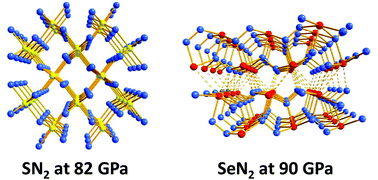
Dalton Trans., 2020,49, 6532-6547
https://doi.org/10.1039/D0DT00807A
Dipyrrin based metal complexes: reactivity and catalysis
This Perspective reviews the use of dipyrrin based metal complexes as catalysts and as templates towards polypyrrolic architectures.
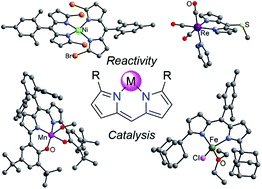
Dalton Trans., 2020,49, 6161-6175
https://doi.org/10.1039/D0DT00884B
1,2,4,5-Tetrazine based ligands and complexes
1,2,4,5-Tetrazine based ligands and complexes are reviewed with a special focus on their crystal structures and physical properties.
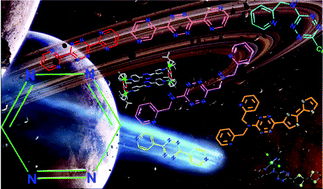
Dalton Trans., 2020,49, 5759-5777
https://doi.org/10.1039/D0DT00827C
Cage-like silsesquioxanes-based hybrid materials
This Perspective reviews recent advances in cage-like silsesquioxanes-based hybrid materials, ranging from monomer functionalization and materials preparation to application.
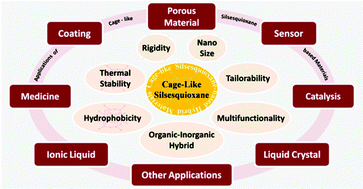
Dalton Trans., 2020,49, 5396-5405
https://doi.org/10.1039/D0DT00587H
Designing nanoparticle interfaces for inner-sphere catalysis
Interfacial chemistry dramatically impacts the activity (performance) and reactivity (mechanism) of nanoparticle catalysts.
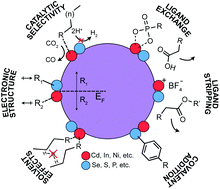
Dalton Trans., 2020,49, 4995-5005
https://doi.org/10.1039/D0DT00785D
Inorganic reaction mechanisms. A personal journey
This review describes a personal journey over the past two decades highlighting experimental and computational mechanistic studies in inorganic chemistry performed with numerous PhD students, post-docs, visiting scientists and colleagues from abroad.
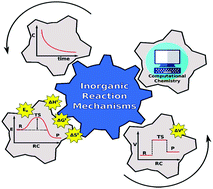
Dalton Trans., 2020,49, 4599-4659
https://doi.org/10.1039/C9DT04620H
Bimetallic PtAu electrocatalysts for the oxygen reduction reaction: challenges and opportunities
A discussion of recent advances in bimetallic PtAu electrocatalysts for the oxygen reduction reaction.
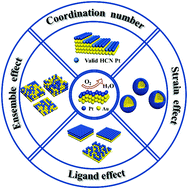
Dalton Trans., 2020,49, 4189-4199
https://doi.org/10.1039/D0DT00205D
Self-healing and shape memory metallopolymers: state-of-the-art and future perspectives
Recent achievements and problems associated with the use of metallopolymers as self-healing and shape memory materials are presented and evaluated.
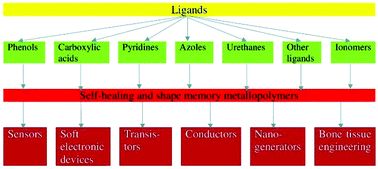
Dalton Trans., 2020,49, 3042-3087
https://doi.org/10.1039/C9DT04360H
Recent advances in metalloporphyrin-based catalyst design towards carbon dioxide reduction: from bio-inspired second coordination sphere modifications to hierarchical architectures
The progress in CO2 reduction catalyst design was examined starting from simple metalloporphyrin structures and progressing to three-dimensional active architectures.

Dalton Trans., 2020,49, 2381-2396
https://doi.org/10.1039/C9DT04709C
The unique β-diketiminate ligand in aluminum(I) and gallium(I) chemistry
Herein we present an overview of the last 10 years for aluminum(I) and gallium(I) stabilized by β-diketiminate ligands that undergo a series of oxidative addition reactions with molecules containing single and multiple bonds.
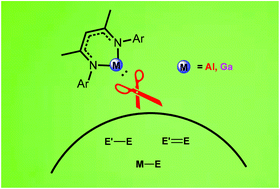
Dalton Trans., 2020,49, 1351-1364
https://doi.org/10.1039/C9DT04763H
Zinc(II), copper(II) and cadmium(II) complexes as fluorescent chemosensors for cations
Fluorescence chemosensing behavior of Zn(II), Cu(II), and Cd(II) complexes for detection of cations emphasizing conventional, metal–metal exchange and chemodosimetric mechanisms has been described conferring their scope, significance and challenges.
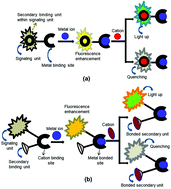
Dalton Trans., 2020,49, 542-568
https://doi.org/10.1039/C9DT03017D
The curious case of peptide-coordinated iron–sulfur clusters: prebiotic and biomimetic insights
Bioinorganic chemistry and prebiotic chemistry represent two different, yet complementary approaches to provide important clues for the synthesis and catalytic activity of biomimetic iron–sulfur analogues in aqueous solution.
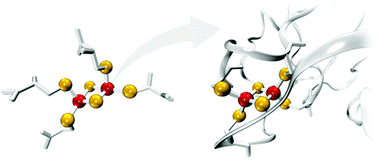
Dalton Trans., 2021,50, 801-807
https://doi.org/10.1039/D0DT03947K
Advances in magnetic films of epsilon-iron oxide toward next-generation high-density recording media
Recent developments in magnetic films composed of epsilon-iron oxide are introduced. The film performance is studied and improved toward the next-generation of high-density magnetic recording media.
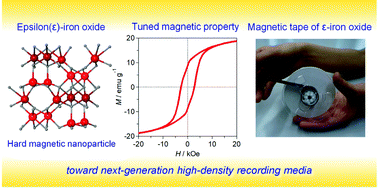
Dalton Trans., 2021,50, 452-459
https://doi.org/10.1039/D0DT03460F
Boron: the first p-block element to fix inert N2 all the way to NH3
Borylene is able to activate inert dinitrogen to the ammonium ion. The entire conversion was established through a successive reduction-cum protonation sequence, through the isolation of all intermediate species.

Dalton Trans., 2021,50, 460-465
https://doi.org/10.1039/D0DT03599H
Electron spin-controlled charge transfer and the resulting long-lived charge transfer state: from transition metal complexes to organic compounds
Electron spin control is promising to prolong the charge transfer (CT) state lifetime based on spin forbidden 3CT → S0.
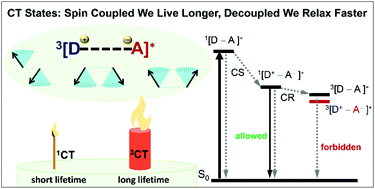
Dalton Trans., 2021,50, 59-67
https://doi.org/10.1039/D0DT03737K
The applications and prospects of hydrophobic metal–organic frameworks in catalysis
These hydrophobic MOFs not only retain rich structural variety, highly crystalline frameworks, but also lower affinity toward water and boost hydrolytic stability. Hydrophobic MOFs catalysts showed unique advantages to various reactions.
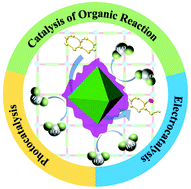
Dalton Trans., 2021,50, 39-58
https://doi.org/10.1039/D0DT03635H
Electrically conductive 1D coordination polymers: design strategies and controlling factors
This frontier article highlights the design strategy and controlling factors that affect the electrical conductivity of 1D coordination polymers.

Dalton Trans., 2021,50, 29-38
https://doi.org/10.1039/D0DT03222K
Metal–organic frameworks containing xanthene dyes for photocatalytic applications
This comprehensive frontier article systematically summarizes the recent developments in the study of MOFs containing xanthene dyes for photocatalytic applications.
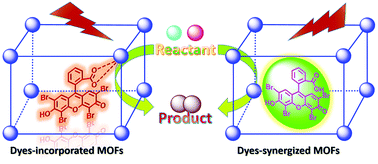
Dalton Trans., 2020,49, 17520-17526
https://doi.org/10.1039/D0DT03652H
The individual role of active sites in bimetallic oxygen evolution reaction catalysts
The family of bimetallic oxides, chalcogenides, and pnictides is regarded as a promising and cost-effective oxygen evolution reaction (OER) catalyst compared to noble metals.
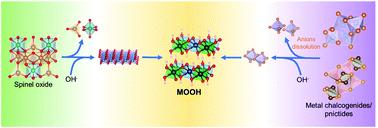
Dalton Trans., 2020,49, 17505-17510
https://doi.org/10.1039/D0DT03448G
Coordination-driven self-assembly of discrete supramolecular double-metallacycles
This review comprehensively summarizes the recent advances in the coordination-driven self-assembly of discrete supramolecular double-metallacycles.
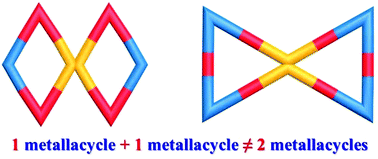
Dalton Trans., 2020,49, 17511-17519
https://doi.org/10.1039/D0DT03186K
Quinoline- and isoquinoline-derived ligand design on TQEN (N,N,N′,N′-tetrakis(2-quinolylmethyl)ethylenediamine) platform for fluorescent sensing of specific metal ions and phosphate species
Utilizing the unique metal-binding and fluorescent properties of methoxy-substituted (iso)quinolines, varieties of fluorescent probes were developed from TQEN (N,N,N′,N′-tetrakis(2-quinolylmethyl)ethylenediamine) structure.
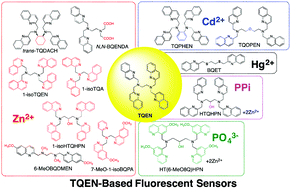
Dalton Trans., 2020,49, 17494-17504
https://doi.org/10.1039/D0DT03024D
Integrated CO2 capture and one-pot production of methanol
The integrated CO2 capture and one-pot production of MeOH using amine-based and alkali hydroxide-based systems are systematically presented. The suitability of the alkali hydroxide-based system over the amine-based system is highlighted in detail.
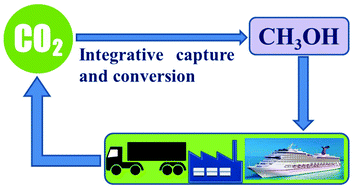
Dalton Trans., 2020,49, 17140-17142
https://doi.org/10.1039/D0DT03667F
Application of MOF-based materials in electrochemical sensing
A summary of the most recent advancements of metal–organic frameworks (MOFs) for electrochemical sensing is listed in this frontier article.

Dalton Trans., 2020,49, 17121-17129
https://doi.org/10.1039/D0DT03388J
UiO-66 derivatives and their composite membranes for effective proton conduction
As newly emerging proton-conducting materials, metal–organic frameworks (MOFs) have been attracting wide attention in the field of proton exchange membrane fuel cells.

Dalton Trans., 2020,49, 17130-17139
https://doi.org/10.1039/D0DT03051A
Optical thermometry based on the thermally coupled energy levels of Er3+ in upconversion materials
Fluorescence intensity ratio technology based on the thermally coupled energy levels of Er3+ is a promising strategy for optical thermometry.
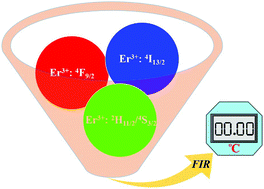
Dalton Trans., 2020,49, 17115-17120
https://doi.org/10.1039/D0DT03100C
About this collection
This web collection contains the Frontier and Perspective articles published in Dalton Transactions in 2020.